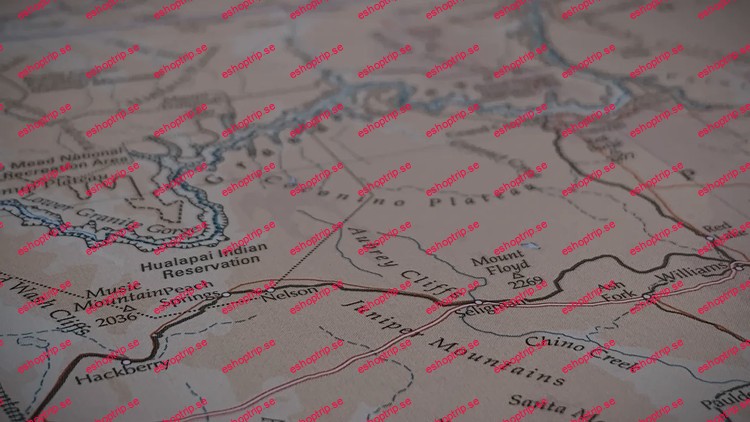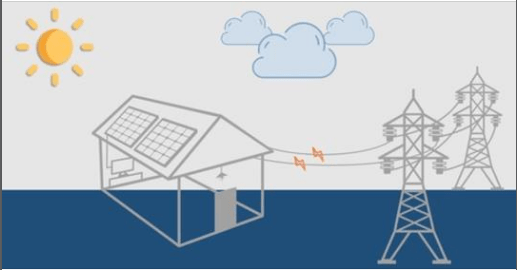Published 7/2024
Created by The Algorithmic Economist
MP4 | Video: h264, 1280×720 | Audio: AAC, 44.1 KHz, 2 Ch
Genre: eLearning | Language: English | Duration: 28 Lectures ( 4h 36m ) | Size: 2.34 GB
Energy Geopolitics, Geospatial Data Visualization, Data Analysis in Python,
What you’ll learn:
This course teaches how to design and visualize pipelines and interconnectors on maps using Python and geospatial data analysis tools.
Participants will learn to install and use Python and essential packages like Geopandas, with guidance on overcoming common challenges.
Learn many geolocation techniques in Python, from creating basic maps to advanced tasks such as plotting interconnectors and updating territories.
There are no prerequisites for this course, making it accessible to beginners interested in energy infrastructure mapping and geopolitical data visualization.
Practical applications include mapping real-world energy infrastructure projects in the Eastern Mediterranean, Europe, and Asia.
Requirements:
There are no prerequisites for this course, making it accessible to beginners interested in energy infrastructure mapping and geopolitical data visualization.
Description:
Welcome to a best-seller course on data-driven Energy Geopolitics!*WHAT THIS COURSE IS ABOUT*This course offers a unique blend of technical skills and geopolitical insight, focusing on the design and visualization of energy pipelines and interconnectors using Python and advanced geospatial data analysis tools. Designed for both beginners and those with some experience in data analysis or geography, the course requires no prerequisites, making it accessible to anyone interested in energy infrastructure mapping and geopolitical data visualization.Throughout the 4-hour and 36-minute video course, students will embark on a journey that begins with the fundamentals of Python programming and progresses to advanced geospatial analysis techniques. The curriculum covers essential topics such as installing Python and crucial packages like Geopandas, with practical guidance on overcoming common challenges that newcomers might face. As the course advances, participants will explore a wide range of geolocation techniques in Python, from creating basic maps to executing complex tasks like plotting interconnectors and updating territorial boundaries. This hands-on approach ensures that students not only understand the theoretical concepts but also gain practical experience in applying these tools to real-world scenarios.The heart of the course lies in its practical applications, where participants will have the opportunity to map actual energy infrastructure projects across various regions of global significance. These include the Eastern Mediterranean, North West Europe, North East Europe, and Asia. By working in these diverse geographical areas, participants will not only hone their technical skills but also gain valuable insights into the geopolitical implications of energy infrastructure development. This dual focus on technical implementation and geopolitical analysis sets the course apart, providing a holistic understanding of how energy systems interact with geographical, political, and economic factors on a global scale.By the end of the course, students will have developed a robust skill set that combines Python programming, geospatial data analysis, and energy infrastructure mapping. They will be equipped to create sophisticated visualizations that can inform decision-making processes in energy policy, infrastructure planning, and geopolitical strategy. Whether the goal is to enhance professional capabilities, support academic research, or simply explore a fascinating intersection of technology and global affairs, this course provides the tools and knowledge needed to effectively analyze and communicate complex geographical data related to energy systems. The skills acquired are highly transferable, opening up new possibilities in fields ranging from energy sector analysis and environmental science to urban planning and historical research. BIOGRAPHY*I have a PhD in Economics, from Imperial College London, and since 2012 I have been conducting research and consultancy in this field. I founded the Algorithmic Economist, which offers education in data-driven economics, where my expertise lies. You will learn how to conduct economic analyses using optimization, machine learning, and data science. My teaching style uses simple, easy-to-understand language and plenty of examples. My vision is to democratize this knowledge and make it more accessible. There are currently very few tutorials in this domain, and academic publications/textbooks often use complex language and are quite outdated.
Who this course is for:
Geopolitical Researchers: Analysts and students focusing on the geopolitical implications of energy infrastructure, particularly in strategic areas like the Eastern Mediterranean, Europe, and Asia.
Data Scientists: Individuals with a background in data analysis who want to specialize in geospatial data visualization and its applications in the energy sector.
Policy Makers and Consultants: Those involved in energy policy, infrastructure planning, or consulting who need to understand and communicate complex geographical data related to energy systems.
Energy Sector Analysts: Professionals working in the energy industry who need to visualize and analyze pipeline networks and interconnectors across different regions.
GIS Specialists: Geographic Information System (GIS) professionals looking to expand their toolkit with Python-based solutions for mapping energy infrastructure.
Journalism and Media Professionals: Reporters and visual journalists specializing in energy, geopolitics, or data-driven storytelling who want to create compelling, data-backed visualizations of energy infrastructure.
Historians: Scholars and researchers studying the historical development of energy infrastructure, its impact on geopolitics, and its role in shaping modern societies.
Homepage










